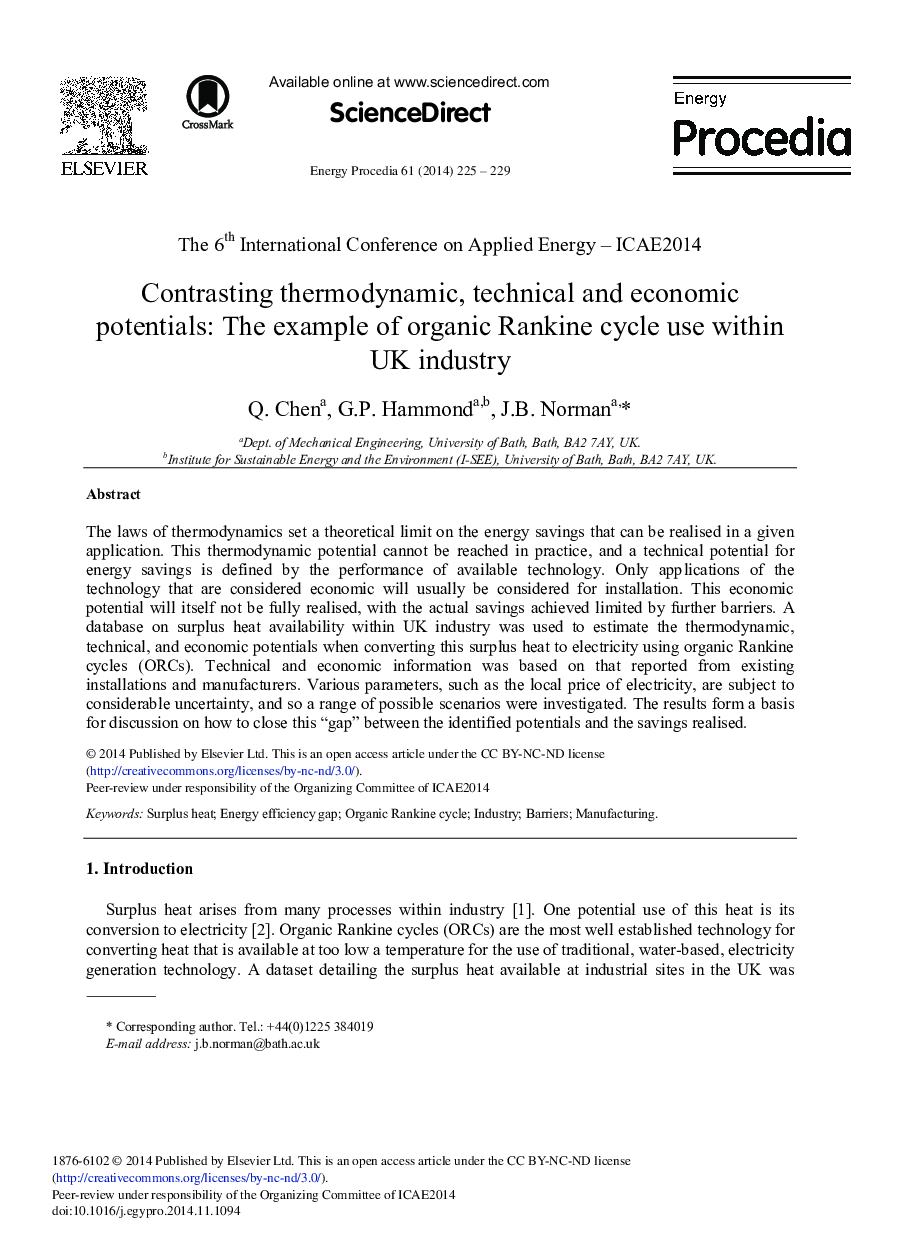| کد مقاله | کد نشریه | سال انتشار | مقاله انگلیسی | نسخه تمام متن |
|---|---|---|---|---|
| 1510482 | 1511174 | 2014 | 5 صفحه PDF | دانلود رایگان |

The laws of thermodynamics set a theoretical limit on the energy savings that can be realised in a given application. This thermodynamic potential cannot be reached in practice, and a technical potential for energy savings is defined by the performance of available technology. Only applications of the technology that are considered economic will usually be considered for installation. This economic potential will itself not be fully realised, with the actual savings achieved limited by further barriers. A database on surplus heat availability within UK industry was used to estimate the thermodynamic, technical, and economic potentials when converting this surplus heat to electricity using organic Rankine cycles (ORCs). Technical and economic information was based on that reported from existing installations and manufacturers. Various parameters, such as the local price of electricity, are subject to considerable uncertainty, and so a range of possible scenarios were investigated. The results form a basis for discussion on how to close this “gap” between the identified potentials and the savings realised.
Journal: Energy Procedia - Volume 61, 2014, Pages 225-229